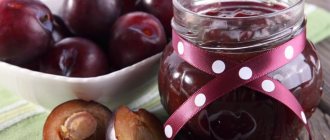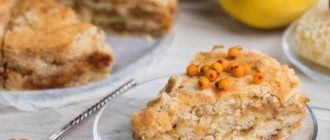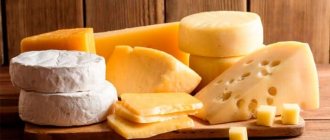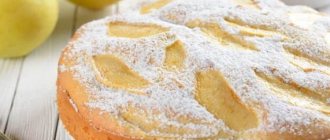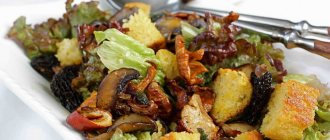Making wine from grapes is a rather troublesome process that requires a lot of time and technology. However, even novice winemakers can master this science. Read our article about how to make wine from grapes.
Making wine from grapes at home involves several steps. First you need to carefully select the berries and choose only ripe ones that are not damaged by rot. Before preparing the wort, the berries should be separated from the branches and should not be washed under any circumstances, so as not to wash away the wild yeast present on the surface of the berries.
It is recommended to crush the berries manually or using a special press so as not to crush the seeds, otherwise the finished wine will be bitter.
The crushed berry mass must be left to settle for a couple of days, then strain and squeeze the juice out of the berries through cheesecloth. If necessary, add sugar and send the juice for fermentation, closing the container with a special water seal or rubber glove.
The fermented juice should be carefully poured into a clean container without disturbing the sediment formed at the bottom of the container. This is done using a special tube in the valve.
The resulting wine is bottled and sent for ripening. The longer the wine matures, the tastier and richer it will be.
Wine from Isabella grapes at home
Aromatic sweet wine with an alcohol content of 9-12% from famous grape varieties.
You will need : 15 kg of grapes, sugar to taste, water if necessary.
Cooking .
Crush the berries selected for making wine with your hands or a potato press. Leave the resulting pulp for 3-4 days and stir 1-2 times a day. Then strain through cheesecloth and squeeze out the juice. If it turns out too sour, add 50-500 ml of water (per 1 liter of juice). Pour the juice into a bottle, filling it 2/3 full, add half the sugar (at the rate of 100-150 g per 1 liter of juice), seal it tightly with a water seal or put a rubber glove on the neck with a hole made in one finger and leave in a dark room at room temperature. temperature (16-22°C). After 5 days, add half the remaining sugar, diluting it in 0.5 liters of strained fermenting juice and pouring it back into the bottle. After another 5 days, add the remaining sugar. In total, fermentation will last 35-70 days. When the glove falls off, the wine itself brightens, and sediment settles to the bottom, carefully pour the wine into a clean container, removing the sediment. At this stage, you can add more sugar, leaving it under a water seal for 7-10 days. Seal the container well and place in a cool (6-16°C) dark place for aging. After 3-6 months, the aged wine can be bottled and stored in a cellar or refrigerator for up to 5 years.
A simple recipe for currant wine with yeast
Wine prepared using this method is moderately sweet, aromatic and very tasty. The strength of the drink is no more than 10-14 degrees.
Ingredients:
- Fresh currants – 4 kg
- Purified water - 10.5 l.
- Sugar - 3.5 kg
- Dry yeast - 1/2 tsp.
Cooking steps:
1. First of all, we need to boil water and then cool it to room temperature.
2. While the water is cooling, let’s start with the berries. For wine, you can take both red and black currants. We sort through the berries, remove debris, leaves and branches, and also throw away spoiled and overripe berries.
There is no need to wash the currants!
3. Grind the berries through a meat grinder; if you prepare from a smaller quantity, you can use a blender.
4. Transfer the crushed berries into a container, pour water at room temperature into it and add half of the sugar from the total amount indicated in the recipe. Next, add half a teaspoon of dry yeast and mix everything well with a wooden spatula.
5. Pour everything into jars, filling 2/3 full. We put gloves on the neck of the cans or install a water seal to prevent air from entering and make a hole on one of the fingers. We take it to a dark place, since direct sunlight is deadly for wine, and we wait for the fermentation process to begin.
6. After 7 days, dilute half of the remaining sugar in boiling water in a separate bowl and pour the sugar mixture into jars of wine. Then we put on a glove, shake it and take it to a dark place again.
7. After 7 days, we again dilute all the sugar that remained in boiling water and pour it into the wine, put on a glove, shake it and put it in a dark, warm place. The wine drink will ferment for about 1 month.
8. When the pulp and yeast sink to the bottom, the wine needs to be poured into another container, while straining through a sieve or cheesecloth. It is best to transfuse using a thin tube, such as a dropper. Wash the bottle in which the wine fermented thoroughly to remove sediment and pour the wine back into it. Thus, stage 1 - fermentation - was completed.
Then the second stage begins - clarification and ripening of the drink. We close the bottle with a water seal and take it to a cool, dark place to ripen.
The wine will ripen for approximately 3 months.
Simple grape wine
Not a complicated recipe for making wine from grapes, which even a novice winemaker can handle.
You will need : 10 kg of grapes, 2.5-3 kg of sugar.
Cooking . Pick the berries from the bunches and crush them with a press until the juice appears. Cover the container with the grape mass with gauze and leave at room temperature for 4-5 days, stirring 2 times a day. Then strain the juice through a colander into a bottle, and squeeze the berry mass through cheesecloth. Add sugar to the juice, mix well, put a glove on the neck of the bottle and leave to ferment for 14-21 days. When the glove is deflated, pour the wine into a clean container, carefully removing the sediment, and place in a cool place for 30 days. Every 10 days, pour the wine into a clean container, removing the sediment. Then pour into bottles and age the wine for another 30 days in a cool place.
Product benefits
Homemade wine is healthy because it is prepared through natural fermentation. The drink retains vitamins and beneficial bacteria. 200 milliliters of wine per day dilates blood vessels, speeds up metabolism and strengthens the immune system.
See also
4 simple recipes for making honeysuckle wine at homeRead
Homemade wine has health benefits:
- for thrombosis;
- pain syndromes;
- weather dependence.
Grape juice is a source of flavonoids and a natural antiseptic. The daily intake should be divided into 2 doses - drink 100 milliliters 2 times a day 10 minutes before lunch and dinner.
Homemade white grape wine
A delightful wine with a unique aroma and a pleasant transparent amber color.
You will need : 10 kg of grapes (Chardonnay, Sauvignon Blanc, Riesling, Pinot Blanc), 3 kg of sugar.
Cooking . Crush the grapes until juice is obtained and leave at room temperature for 5 days, stirring the berry mass occasionally. Then strain and lightly squeeze the settled juice through cheesecloth into a clean bottle, add sugar to taste (depending on the sweetness of the grapes and the desired finished drink). Seal the bottle with a water seal (or rubber glove) and leave to ferment for 3 weeks. After fermentation is complete, carefully strain the wine so as not to disturb the sediment, bottle it, seal it and place it in a cool place for 4 weeks to age.
Wine from 1 kg of black currant in a 3-liter jar with a glove (without yeast and without alcohol)
First of all, I want to tell you about a simple recipe for delicious and aromatic homemade blackcurrant wine. It will take about 4 months to prepare and ripen, but such a drink can be stored for 2 years for sure; we haven’t tried it longer. The wine turns out to be a beautiful rich ruby color, natural, aromatic, tastes like Cahors, but there are notes of currants. The recipe is very easy to follow, and the drink turns out divine!
To prepare you will need:
- Black currant - 1 kg.
- Water - 1 l.
- Sugar - 500 gr.
Cooking process:
1. Do not wash blackcurrants so as not to wash away the natural yeast that is on the surface (on the skin) of the berries; we only remove the leaves and sticks that fall during the picking of the berries.
Important! Berries can be used either fresh or frozen (just do not wash them first before freezing).
2. Grind the berries in any convenient way (blender, meat grinder or masher). We send the chopped currants into a 3-liter jar in which we will make wine.
3. Pour half the amount of sugar (250 g) into 1 liter of warm water (approximately 35-36 degrees) and stir well with a spoon. I add it directly to the jar and mix it there.
Next, pour the water with dissolved sugar into a 3-liter jar to the chopped berries and mix.
Attention! Water with berries should be filled to 2/3 of the container to leave room for fermentation.
4. We put a rubber glove on the jar and make several punctures with a finger, then we send the jar to a dark place for 4 days, so that everything ferments well and the pulp releases all the juice as much as possible, so that the wort is maximally enriched with currant berries.
5. The wort has fermented and the glove is inflated. After 4 days, remove the glove and strain the wort from the berry pulp. You can strain through cheesecloth or a fine sieve. We strain the pulp well and throw it away; we no longer need it. Pour the berry wort back into the bottle (you just need to wash it to remove sediment first).
Pure wort without pulp, it turns out a little less than half a 3-liter jar.
6. If you remember, we still have sugar left (half of the specified norm - 250 grams or 1 glass). Usually the wine ferments for another three weeks. Divide the sugar into 4 parts, add 1/4 of the sugar now and then every week add a portion of the sugar and mix. This way the wine ferments well and the glove doesn’t fall off. Also taste the wine to taste and adjust the sweetness (put a little less sugar).
After stirring 4 parts of sugar, we also put on a glove or water seal and put it in a dark place for fermentation at a temperature of 16 to 25 degrees.
7. After three weeks, the wine stopped fermenting, the glove fell off, we took it off and strained the wine. To do this, take a saucepan or any other container, put a sieve and additionally put 3-4 layers of gauze on the sieve to strain out the sediment. We filter the wine in this way, the sediment remains on the gauze.
8. Pour the wine into glass bottles, close with corks and take them to a dark, cool place to mature for 3 months. And once a month we drain the sediment, although we strain it well, sediment will appear.
After three months the drink is ready!
Homemade red grape wine
The finished wine, prepared in compliance with the technology, turns out to be very aromatic, with rich color and bright taste.
You will need : 5 kg of grapes (Pinot Noir, Merlot, Cabernet Sauvignon, Isabella varieties), 1.5 kg of sugar.
Cooking . Sort the berries, remove clusters and low-quality berries and crush. Strain the juice, pour into a saucepan and heat slightly to dissolve 750 g of sugar in it. Place the squeezed berries in a bottle, fill with sweetened juice, cover with gauze and leave in a dark, warm place for 5 days. Stir the berry mass twice a day. Then strain and squeeze the good mass into a clean container, add the remaining sugar, mix and cover with a water seal or rubber glove and place in a shaded, warm place for 3 weeks. As soon as the fermentation process is over, pour the wine into a clean container, trying not to disturb the sediment that has fallen, seal it and leave it in a cool place to brew for another 4 weeks. Every 10 days, pour the wine into a clean container, removing the sediment. Then place the container of wine in the refrigerator and leave for at least another 4 weeks.
Wine made from grapes with water
Adding water softens the taste of the wine. The main thing is to maintain the correct proportions.
You will need : 5 kg of grapes, 3 kg of sugar, 12 liters of water.
Cooking . Sort the berries, crush them in an enamel bowl and leave for 3 days, covering the container with gauze. Stir the berry mass 2-3 times a day. Strain it and squeeze the juice from the crushed berries into a bottle, add a third of sugar, stir well, close with a water seal and leave to ferment in a dark, warm place for 1-2 months. Once a week, pour the juice into a clean container, carefully removing the sediment. During the first 10 days of fermentation, add the remaining sugar in two additions. After another week, dilute the strained juice with water. When fermentation is over, bottle the finished wine and leave to ripen in a cool, dark place. The longer the wine matures, the tastier it will be.
Homemade dry grape wine
To make dry wine, use grapes with a sugar content of up to 20%.
You will need : black or white grapes.
Cooking . Crush carefully selected grapes, prepare the must, and leave to stand in a warm place for 3-5 days - for dark grapes and for a day - for white grapes, until the crushed berries (pulp) rise to the top. Then strain the juice and squeeze the pulp through cheesecloth into a container with a narrow neck, cover with a rubber glove or water seal and leave the juice to ferment for 10-25 days at room temperature. When fermentation is complete, pour the wine into a clean container without disturbing the sediment, and leave to ripen in a dark, cool room for 1 month (for white wine) or 2-3 months (for red).
Recipes
More precisely, only one recipe for making homemade red wine will be considered, but it will be quite light and tasty. Let's look at this recipe step by step:
Ingredients:
- any red grapes;
- yeast for red grape varieties. If there are none, you can do without them;
- bentonite is a clay with small grains that serves as a wine clarifier.
Crockery and cutlery:
- fermentation containers made of glass or food-grade plastic, a couple of pieces;
- 2 water seals;
- a hydrometer necessary for measuring the density parameters of juice;
- Disinfectant for dishes. Can be replaced with regular iodine solution.
Preparing the grapes
If we are talking about preparing a small amount of red homemade wine, then preparing the grape fruits can be done independently. To do this, the grapes are carefully sorted, cleared of green and rotten fruits. When using wild yeast, the raw materials are not washed. It is desirable that the grapes are not dusty.
You can prepare grape fruits yourself
Juice department
To obtain grape juice, the recipe involves crushing the grapes until a paste-like consistency is formed. After this, the container is covered with a lid and left at room temperature for a period of 4 days. On the first day, the resulting cap must be knocked down several times a day. In this way, more efficient juice separation and yeast fermentation can be achieved.
After a period of 4 days, when a pronounced smell of fermentation appears, the wort is separated from the cake:
- gauze is spread over a colander, on which fermented grapes are laid;
- raw materials are squeezed out by hand;
- the separated juice is drained into a clean container.
Fermentation of grape must
The strained juice is poured into a fermentation container
As the recipe says, all actions should be performed according to the following algorithm:
- The expressed juice is poured into a fermentation container.
- A hydrometer is used to determine the sugar content of wine. With a density of 20-25, there is no need to add sugar. For values not exceeding 15, sugar is added at the rate of 50-80 grams per liter.
- Part of the wort is poured, heated and cooled, after which it is added to the rest of the raw material and mixed.
- A water seal is placed on top of the fermentation container.
- At the end of the vigorous fermentation process, the sediment is drained from the wine.
Clarification of wine
To clarify a homemade drink, this recipe involves the use of bentonite, which is mixed with warm water until a sour cream consistency is formed. After this, the bentonite must be given time to tincture for 10 minutes. After the specified time, the mixture is poured into wine, stirred and left for a week.
Over the course of a week, the red wine will become clearer due to the precipitated bentonite particles. The clarified wine is drained and left to mature for another month.
Homemade wine from Moldova grapes
The right wine from Moldova grapes turns out sweet, rich ruby color, with a pleasant tart aftertaste.
You will need : 30 kg of grapes, up to 5 kg of sugar, up to 10 liters of water.
Cooking . Sort the berries, crush them and leave for 3-4 days, stirring every day. Then strain and squeeze out the juice, add sugar, close the container with a water seal and leave to ferment in a warm, dark place for 1-2 months. After fermentation is complete, pour the wine into a clean container, removing the sediment, and send it to ripen in a cool place for up to 6 months.
How to remove sediment?
After our wine has finally stopped fermenting, it’s time to remove it from the sediment. To do this, place the container higher above the floor (about half a meter) and wait a couple of days. When all the sediment has sunk to the bottom, you can pour the drink into a clean container through a thin rubber hose. We lower one end of the tube into the liquid, and the other, after sucking in air, lower it into the prepared vessel. It is very important not to be greedy and not to drain the wine completely. If sediment gets into the wine, it will either begin to ferment again or add bitterness to the finished drink. Ideally, drain before reaching 2-3 cm of sediment.
Homemade wine from Lydia grapes
The finished wine from the Lydia grape variety has a strawberry aroma and pleasant taste.
You will need : 10 kg of grapes, 3 kg of sugar.
Cooking . Crush the selected berries, place them in a deep container, cover with gauze and leave in a dark place at room temperature for 5 days. Then strain the juice into a large jar or bottle, removing the pulp, add sugar, mix well, close and leave to ferment in a dark place for 3 weeks. Then carefully, using a tube in a water seal (if one was used), remove the wine from the sediment, bottle it and place it in the cellar to ripen for at least 40 days.
Homemade currant wine with vodka and raisins
From the recipes above it is already clear that currant wine is weak in strength, and if you need a vigorous drink, then you need to add vodka, cognac, moonshine or another strong drink to increase the strength. It is not difficult to prepare fortified currant wine, the main thing is to follow the preparation technology and be patient.
Required:
- Currants (black) – 6 kg
- Water - 6 l.
- Sugar - 2 kg
- Light raisins - 200 gr.
- Citric acid - 20 g.
- Vodka (cognac, alcohol, moonshine) - 0.5 l. for 5 liters of currant juice
Step-by-step preparation of currant wine:
1. Sort the berries, remove leaves, stems and spoiled currants.
2. If you picked currants on your own plot, you don’t need to wash them, but if you bought them, rinse them lightly and fold them in one layer on a paper towel.
3. Grind the berries in a convenient way - grind in a meat grinder, chop with a blender or mash with a masher or your hands.
4. Bring the water to a boil, add sugar, stir and let simmer over low heat for 15 minutes and cool. Next, mix with citric acid.
5. Transfer the currant puree into glass bottles, which need to be washed very well, or better yet, sterilized. We do not fill the containers completely so that there is room for fermentation.
6. Mix the puree with the cooled sugar solution and unwashed raisins. Put a rubber glove on the fermentation container and make a small hole in your finger (or install a water seal). Next, we take the bottle to a dark, warm place; if there is none, then you can put it in a blanket to keep out the sun’s rays.
7. After about a month, the juice will ferment. Now you need to drain the drink from the sediment through thin tubes into a new container, which must be thoroughly washed, doused with boiling water and dried. Squeeze out the pulp using gauze folded in 4 layers, and pour the juice into the wort.
8. Mix with strong alcoholic drink. Choose according to your taste - vodka, alcohol, moonshine or cognac. Calculation: 500 ml per 5 liters of currant juice. At this stage, you can also add a spicy note to the drink by adding a little anise powder, cardamom or cinnamon.
9. Seal the glass container and take it to a cool place until ripening. The ideal place is a cellar. The wine matures in approximately 2-3 weeks. Then we filter the drink using gauze to remove sediment and, if spices were added, the remaining grains of spices. We pour the drink into glass bottles, seal it tightly and place it horizontally, now not in a warm place, but in a cool, dark place.
This is such a strong drink! Having made several types of currant wine, the most delicious turned out to be fortified with cognac, not vodka.
Homemade grape wine without sugar
To make the wine tasty and not sour without adding sugar, use sweet grapes to make it.
You will need white grapes.
Cooking . Crush the selected berries and let them sit for 12-18 hours in a cool place, then filter and remove the pulp. Pour the resulting juice into a bottle, close the lid and leave to ferment at room temperature for 3 weeks. Then pour the wine into a clean container, close it tightly and leave to ferment for another 3 weeks. After a while, pour the wine again into a clean container, seal it and leave for another 1 month, then pour it again, removing the sediment. If the wine remains cloudy, place the container with it in a dark place with a temperature of 0°C to 6°C for a couple of weeks, during which time the cloudiness will settle. Pour the finished wine into bottles and try it or store it in the cellar.
Grape wine with herbal infusions
I used to love doing crossword puzzles. And I remember how I got stuck on a word where I had to guess the name of a wine infused with herbs. The word consisted of 6 letters. I remember that I still didn’t guess. There was no Internet at that time, and for a long time this word remained unknown to me.
And imagine my surprise when I found out that it was vermouth. In Soviet times, you could buy it in the store, but the preparation technology was unknown to few people.
But it was a long time ago. Now you can easily find the answer to any question. Just like making a branded white wine a la Martini or Cinzano. Moreover, in the previous recipe we learned how to cook it. After all, it is on its basis that the drink beloved by many women is prepared. Just keep in mind that we prepared dry, and we will need semi-sweet. That is, with added sugar.
We will need the following components:
- alcohol 70% – 110 ml
- vanillin – 0.4 g
- juniper berries – 0.4 g
- ground nutmeg – 0.5 g
- whole cinnamon – 0.9 g
- cardamom – 1 g
- chamomile – 1 g
- peppermint – 1 g
- yarrow – 1.8 g
- wormwood – 2.1 g
Preparation:
1. Measure the exact value of the required components on an electronic scale. All herbs are taken in dried form. At the same time, crush large juniper berries and cardamom in a mortar until they form small particles. If you don’t have a mortar, you can crush them with a rolling pin on a cutting board.
2. Combine everything you have prepared in a jar and fill it with strong alcohol. Close the container with a lid and shake the mixture. Place in a dark place for 14 days.
3. Once the time is up, the infusion of herbs and seasonings must be filtered. It is better to do this using several cotton pads. This way the infusion will seep into a clean container, and the rest will be retained. And in order not to lose precious aromas, the cotton pad should be thoroughly squeezed out at the end.
4. To get 1 liter of finished vermouth, add 70 grams of sugar to 50 ml of water and mix thoroughly until it dissolves. Then pour in 100 ml of 50% alcohol and 10 ml of herbal tincture. Mix all.
5. Pour the resulting mixture into a liter bottle or jar. Top up the remaining space with white semi-sweet wine. Place in a dark, cool room and let stand for 7 days so that the drink infuses and everything combines harmoniously in taste.
The remaining herbal infusion can be stored in a cool place, covered. If necessary, from this amount you can prepare 5-6 liters of delicious vermouth.
By the way, you can currently purchase ready-made mixtures in specialized stores.
The finished product tastes very much like famous drinks. It may not be as clear as a Martini, but the taste is very similar.
Serve the drink with olives or crushed ice.
Wine from grapes in a jar
If you do not have special large bottles for preparing wine, use ordinary glass jars for this.
You will need : 10 kg of grapes, 2.5 kg of sugar.
Cooking . Sort the berries, remove the clusters and crush in an enamel container. Cover it with gauze and leave the berry mass in a shaded place for 4-5 days, stirring twice a day. Then strain the grapes through a sieve and squeeze out the juice from the pulp, pour it into jars, add an equal amount of sugar, and stir. Pull a rubber glove with a hole made in one finger with a needle over the neck of the jar, tie a rubber band around the glove and leave the wine to ferment for 2-3 weeks. After this, carefully strain it through cheesecloth, trying not to disturb the sediment that has fallen, pour it into bottles and place in a cool place for 1 month. During this time, pour the wine into a clean container three times, removing the sediment. At the end of the specified period, the finished wine can be tasted and sent for storage.
How to choose a container for homemade wine
When squeezing 10 kg of grapes, you will get approximately 7 liters of juice. For initial fermentation, the container should be 1/3 full. These values are used to guide the selection of container volumes. It is also necessary to provide an additional container in which fermentation will take place parallel to the main one; young wine from it will be used to top up the main container. Some sellers offer beginner winemaker kits.
Plastic container for fermentation.
How to make wine from grapes and stages of fermentation
A few days before making wine, a starter is made. A small amount of grapes is mashed and left for fermentation, for example, in a 2 liter jar.
Wine grapes should not be washed, since the coating on the skin contains yeast, which will determine the fermentation process. The berries are destemmed and sent for pressing. If there is no special hand press, then pressing can be done manually: mash the grapes well and squeeze them using a hard object, for example, a wooden rolling pin. Many people ask the question: how to make grape wine at home, and is it possible to use juicers? The answer is yes, you can. It is especially good to ferment juice squeezed from white grapes using a juicer, without keeping it on the pulp. The photo below shows a manual press for squeezing grape juice.
Manual press for squeezing grapes
To obtain a richly colored wine, fermentation is carried out together with the pulp. The juice is already called wort. Sourdough is added to it and placed in a warm place at a temperature of 18−20°C. At a very high temperature, the yeast will die, and at a lower temperature, the process will go too slowly. At the optimal temperature, vigorous fermentation begins on days 3–4. The container should be kept under a polyethylene lid, which slightly allows gases to pass through. Another option is a rubber glove in which a slight puncture is made. Another option is to cut a rubber tube into the plastic lid, the free end of which is lowered into water. The degree of fermentation can be determined by the intensity of the water bubbling. At this time, the pulp is stirred several times a day, trying to drown it in the wort. When the bubbling stops, the pulp is finally squeezed out and completely removed from the container. Depending on the temperature, the period of vigorous fermentation lasts from 5 to 14 days. In the photo you can see containers with fermenting wort.
Large bottles for making wine
Containers with fermenting wort
Secondary wine from grape pomace
Cake is pressed, crushed grape berries. You don’t have to throw them away, but prepare the so-called “petio” - a low-alcohol light wine.
You will need : 7 liters of cake, 1 kg of sugar, 5 liters of water.
Cooking . Dissolve 800 g of sugar in water and pour the resulting syrup over the cake, stir and pour into a bottle. Cover with a water seal or glove and place in a dark, warm place for 2 weeks. On the first day, stir the mixture 2 times. Then strain the wine and squeeze the pulp into a clean container, add the remaining sugar and leave for another 1-1.5 months. Remove the finished wine from the sediment using a tube, add more sugar or alcohol for strength if desired, bottle it and place it in a cool, dark place for storage. After 3 months of aging, the wine can be tasted.
Wine made from grape juice
Delicious homemade wine can also be made from squeezed grape juice.
You will need : 3 liters of grape juice, 800 g of sugar, 1.5 tsp. dry yeast, 4 glasses of water.
Cooking . Dissolve sugar in boiling water, add juice and dissolved in 1 tbsp. hot water yeast. Mix well, pour into a bottle, cover with a rubber glove and leave in a warm place for about 24 days. When the glove falls off, strain the wine, bottle it and taste.
Wine made from sour grapes
From small blue grapes, which are usually grown by amateur gardeners, you can make quite decent wine.
You will need : 5 kg of grapes, 2 kg of sugar.
Cooking . Sort the berries and crush them in an enamel container. Strain the juice and squeeze the pulp into a jar or bottle, filling it 2/3 full. Seal with a water seal and place in a cool place for 2-3 months. After the specified period, the liquid can be filtered, removed from the sediment and consumed as dry table wine. Or add sugar, seal the bottle and leave for another month. Carefully remove the finished wine from the sediment, bottle it and store it in the cellar or refrigerator.
Currant wine without yeast and without alcohol
Blackcurrant wine is prepared with the addition of water and sugar, since the berry has little juiciness and sugar, but on the surface of the skin there is a sufficient amount of natural yeast, which ensures normal fermentation, so the introduction of starter cultures is not required.
Required:
- Black currant – 2 kg
- Sugar - 500 gr.
- Water - 3 l.
Cooking process:
1. Prepare the wort. Do not wash the berries, crush them with a mortar or grind them through a meat grinder, or puree them with a blender.
2. Prepare the syrup. mix warm water with sugar.
3. Pour the currant mass into a glass container with a wide neck; 3-liter jars are ideal. Pour syrup over mixture and stir. From the above ingredients we got 2 incomplete 3 liter jars. We don’t fill the jars to capacity - we leave room for fermentation.
4. Tie the neck of the jars with gauze and send them to a warm, dark place to ferment for 4 days. Twice a day, you need to mix the mass, drowning the floating pulp in the owl.
5. After 4 days, filter the currant juice through cheesecloth and squeeze out the pulp. Pour the juice into a container in which it will ferment without adding 85% of the volume. Add sugar to the container at the rate of 100 g. sugar per 1 liter of wine, stir. Put a glove on the neck and pierce your finger or install a water seal. Leave to ferment for 28-30 days at a temperature of 18-28 degrees in a room without direct sunlight.
6. After a month, the fermentation process stops. Now we need to drain the wine from the sediment, pour the drink into bottles and seal it with corks.
Important! At this stage, you can make fortified wine by adding alcohol at the rate of 1 tbsp. spoon (alcohol, vodka, moonshine) per 1 liter of wine.
7. Take it to the cellar (in a dark, cool place) to ripen. Ripening time is 1 month.
The shelf life of homemade currant wine is 1-2 years!
drink delicious natural drinks!
Wine from unripe grapes
It is better to make sweet dessert wine from slightly unripe grapes.
You will need : unripe grapes, sugar, water and wine yeast.
Cooking . Separate the berries from the branches and crush. Heat the resulting pulp to 60°C, then cool to room temperature, strain and squeeze out the juice. Dilute the juice with water to taste, add sugar and yeast starter prepared according to the instructions on the package. Close the container with juice with a seal or glove and leave to ferment at a temperature of about 20°C for 1-2 months. Then carefully remove the wine from the sediment, add more sugar (100-150 g per 1 liter of liquid), stir, bottle, seal and place to ripen at room temperature for 2 months.
As you can see, making wine from grapes is a rather painstaking process, but quite manageable. Try making homemade wine from grapes and invite your friends to a tasting!
Grape wine with added water and sugar - the best recipe with proportions
Well, in conclusion, I want to show another example of how you can make wine from grapes yourself, but only this time all the recommendations will be given by the video blogger. Happy viewing and experimenting!
That's all for me, I hope my advice and recommendations will be useful to someone. I wish you fun discoveries and tastings. Don't overdo it though).
See you all soon and share the note on social networks, set classes and join groups in contact or classmates. Goodbye.
Best regards, Ekaterina


